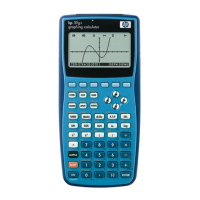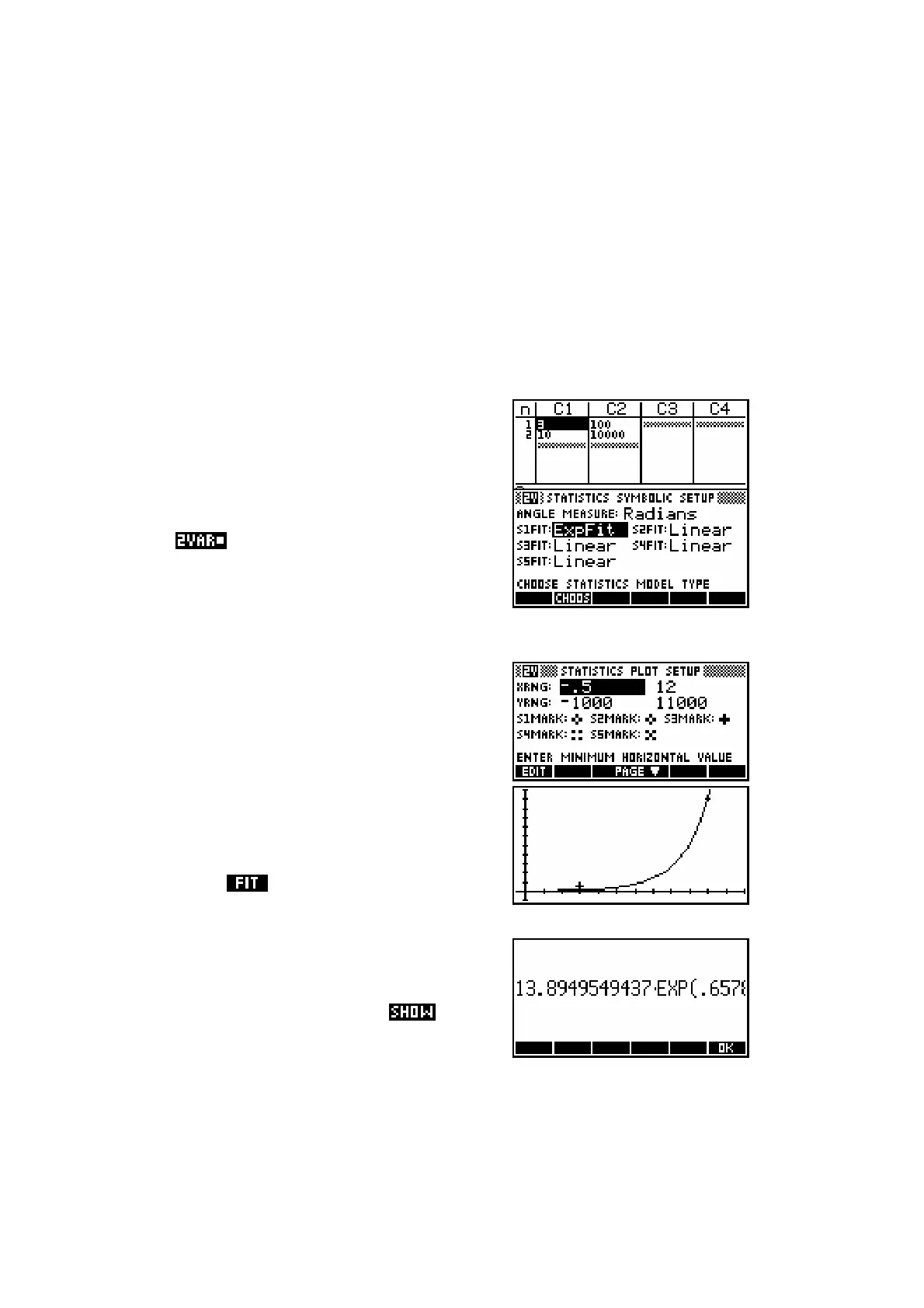291
E
E
x
x
p
p
o
o
n
n
e
e
n
n
t
t
i
i
a
a
l
l
g
g
r
r
o
o
w
w
t
t
h
h
A population of bacteria is known to follow a growth pattern governed
by the equation
0
;0
kt
NNe t=≥. It is observed that at t = 3 hours,
there are 100 colonies of bacteria and that at t = 10 hours there are
10,000 colonies.
(i) Find the values of
0
N and of k.
(ii) Predict the number of bacteria colonies after 15 hours.
(iii) How long does it take for the number of colonies to double?
(i) Find
0
N and k.
Step 1. Start up the Statistics aplet, set it to
and enter the data given.
Change to the SYMB SETUP view and
specify an Exponential line of best fit
for the data.
Step 2. Change to the PLOT SETUP view and
adjust it so that it will display the data.
(This is not really needed, since the
line of best fit is what we need and it
will be calculated even if the data
doesn’t show.) YTick is set to 1000
incidentally.
Now change to the PLOT view and
press (if not already set). Wait
while the line draws.
Step 3. Change to the SYMB view, move the
highlight to the equation of the
regression line and press .
Rounded to 4 dec. places, this gives
an equation of:
0 6579
13 8950
t
Ne
⋅
=⋅

